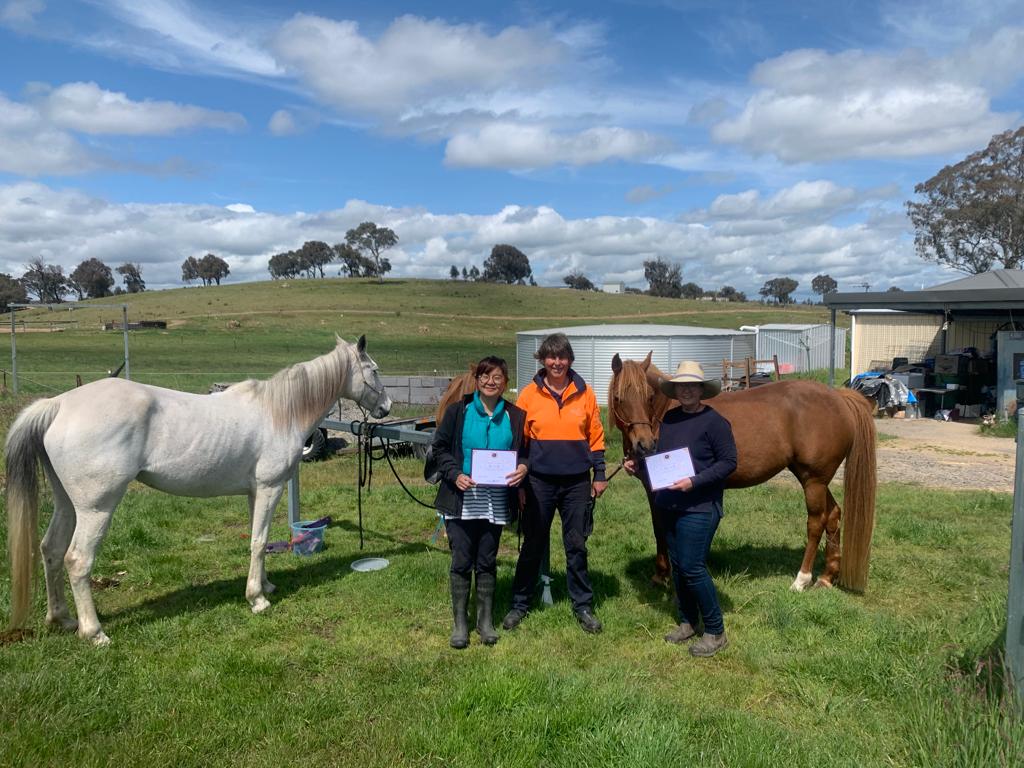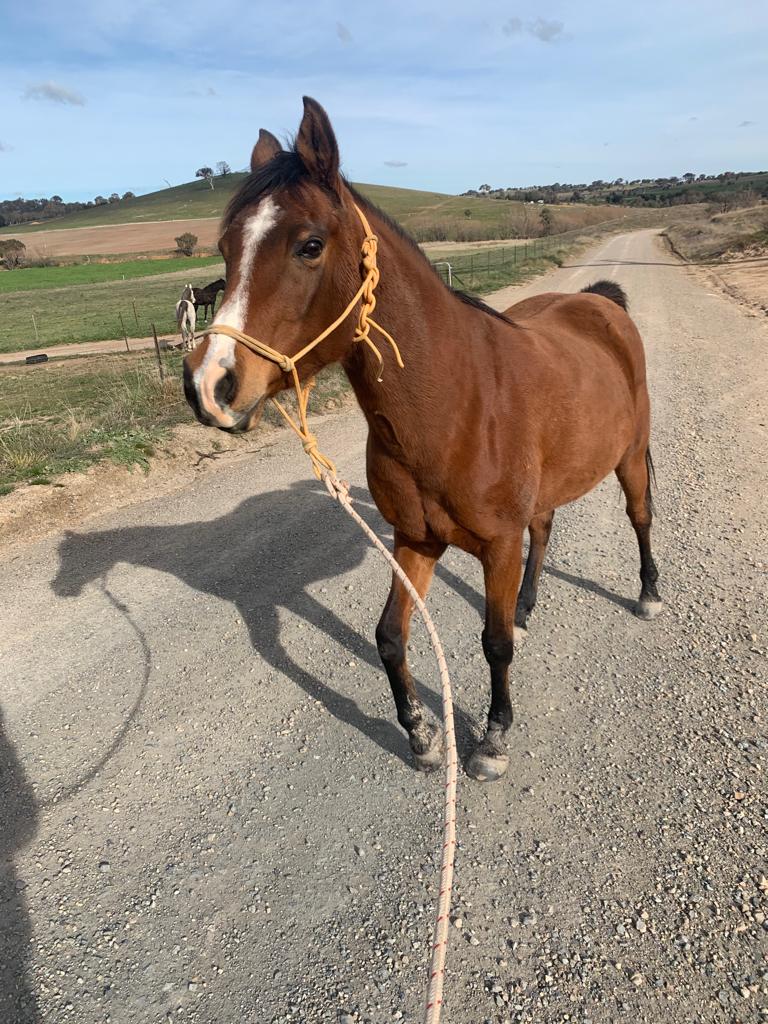Host a Workshop or Clinic
Are you interested in howting a workshop or clinic? Please complete the form below.
Host a workshop
clinic host information
Level 1 and Level 2 Clinics are 3 days in duration; Level 3 is 2 days.
Our level 1 Equine Musculoskeletal Unwinding is now an approved modality by the International Institute of Complementary Therapists (IICT), and we are proud to now be able to offer students a continued benefits such as insurance coverage for their businesses as well as IICT approved logos and other credentials to use in their advertising.
Shop
Visit our online store
Completed online Registration Form and a US$250 deposit are required to hold a student’s space for Marisa Levitt clinics. Final AUD payment due 30 days prior of the beginning of workshop date.
We will make and send you the registration and Facebook event links to use. We then advertise this to our 19,000+ social media followers and ask that you share it with your contacts as well. A Facebook event on your page is a great idea as well, and sending a co-host invitation to the instructor makes it even better.
Each student completing the entire clinic will receive a Certificate of Completion, as will the Host upon completion. Auditors are watch only and do not get a certificate.
Student Cost are estimated at $875 US per student level 1 and $825 US level 2. There is a US component for the deposit and an AU component for the remainder. It is done this way to keep costs as low as possible for each student. Students taking all three levels at once get a discount. The maximum number of students attending is eight, including the host. If extended travel is required then costs are adjusted to incorporate travel. Auditor Cost is $350 US per student. This includes the online workbook that students will also receive to follow along with the class. The maximum number of auditors is 8.

What your venue should be able to offer
Clinics & Workshops
• A place out of the sun, wind, and rain. This can be using a few stalls and a few horses in barn aisle where all 4-6 horses (1 horse per student) can be soft tied safely.
• Flat surfaces.
• Preferably a place where all horses can be soft tied, where April can observe all the students. An area with enough light – we have done clinics in barn aisles, stalls, and also indoor arenas, etc. I prefer not to use an arena as the horses paw the dirt and want to run or roll. We find them to be much quieter in smaller areas.
• Bathroom nearby or rented portable toilet if necessary.
• Break room or classroom where we can go to talk in between hands-on work. All days start in the classroom at 9 am local time unless otherwise noted.
• Chairs and a table in the classroom, or in a cleaned-out stall.
• If the weather is cold, somewhere students can get warm beverages.
• Extra empty big spray bottles for the product I supply-not all students can get them after getting off the plane to fly in.
• Name tags for students.
The host should make a list of four (or three if small place) groups of horses. One horse per student always, and the student will see same horse each group. With small properties I have altered this where we travel to another barn close by for groups three and four if necessary. So, only groups one and two would need to be in same location-hauled in or stabled there. We make it work for everyone.
• Group 1 being the quietest to stay tied for a long time.
• Group 2, easy to tie.
• Group 3 can be livelier and saving any problem horses for Group 4 when the students feel more confident.
• Group 4 is the final exam horse.
Horses should not be worked or ridden during the clinic days they are being worked on and for two days after, preferably.
• Groups 1 & 2 horses on Day 1 and 2.
• Groups 3 & 4 horses on Day 3. We can travel to 2 different barns on day 3 to do this.
• This keeps the number of horses needed at the host facility down to 2 horses per student.
Every day starts in the classroom at 9 am sharp for information. Day 1 starts at 8:45 am to sign Liability Release HHW Clinic
• Day 1: 1:00 pm – Group 1, which should be very quiet horses, easy to stand tied for long periods. 3:30-4 pm – Group 2 horses should be available. Always 1 horse per student. We only do half of a horse per day.
• Day 2: 11:00am – Group 1 horses We will take a lunch break then work on the same group horses after lunch if they are not finished, so if they can stick nearby is good. 3ish – Group 2 horses should be available to finish. By end of day 2 both groups 1 and 2 should be done.
• Day 3: 11:00 am – Group 3 horses work through and take a late lunch After lunch we do group 4 horses and both of groups 3 and 4 can be at another local barn we carpool too. Then students get their certificate.
What you will be learning:
Conformation is what the horse is born with. Posture is what develops from a body in pain and unable to move correctly.
• How to find and release the core issues that other modalities are missing.
• How to release the 1st rib misalignment creating high/low hoof syndrome as well as most of the other body and saddle fit and training issues.
• How to softly release neck, withers, ribs and pelvis alignment with soft safe effective moves.
• Basic understanding and applied use of acupressure and how the energy meridians affect the whole health and wellness of the horse. Level 2 goes into more depth.
• How the balance of the hooves affects the organs, thus affecting the whole wellness of the horse; as well as the imbalance of the hooves affecting the joints and muscles higher up.
• How to balance the Yin/Yang of the horse.
• How to do Defense Posture Releasing: releasing the muscle pattern developed of Fight or Flight Response in the horse. This needs to be done before any muscular/skeletal releases are ever done. On foals, we might do this last.
• How to muscle test and use applied kinesiology basics. Level 2 Clinic goes more in-depth into kinesiology.
• How to feel for energy blocks in the horse’s system and release them.
• How to palpate for sore or overly tight areas of the equine body to determine where the key issues are located. This includes lameness checkpoints.
• How to find the source of the issue. Typically, you will find most people are treating the area of the horse that hurts. This is the ‘compensation’ point of the body part that was so overloaded it can no longer do its job, which results in mysterious lameness. We teach to find and fix the cause, then the symptom will heal faster. Mysterious tendon, suspensor or hock issues are just a body part overcompensating and doing too much and working too hard because another body part cannot do its job properly.
• Learning Osteopathic type muscular and skeletal releases to unwind the equine body and bring it back to proper form and function. Students will notice the horse gets about 4″ longer 2″ taller and looks to have gained 20 pounds as the fascia softens and relaxes. When we are done the horse’s skeletal system will be in alignment.
• Learn the difference between ‘Conformation’ and ‘Posture’.
Prerequisites for the 3 Day, Level 1 Clinic
To have watched 2 watch instantly videos April provides, when they pay their deposit, listed below and be practicing the moves prior to the clinic. This clinic is to fine-tune your techniques illustrated in the DVDs. Marisa’s plan is to teach you new concepts in the class so please study your homework. Marisa will help you learn the touch and feel of the moves in-depth. No previous experience necessary.
- April’s online workbook and 2 videos: “Horses are Talking” and “Equine Cranial” links sent when the student deposit is paid, or auditor spot is paid
- Equine Acupressure book – Tall Grass Publishing is recommended
- Dr. Bradley Nelson’s “Emotion Code” book, which can be downloaded to a Kindle and is offered for free on April’s website under the “Look Here” tab. It also can be found in local library or use don Amazon.
- Recommended, but not necessary, Jack Meagher’s book “Beating Muscle Injuries for Horses”
additional skills to expand your knowledge and skills
Level 2 Clinic: Equine cranial unwinding of all the fascia and Meridian balancing also using Applied Kinesiology
Prerequisite: Level 1 3-day clinic.
We start with level 1 cranial on the bones of the horse. Then go onto level 2 cranial unwinding all the fascia in the body creating front and hind legs that are too close together not allowing the joints to load correctly creating premature arthritic conditions like sidebone, ringbone, arthritic knees and hocks. Also worked on are issues like EPM, Kissing spine and other mislabeled maladies.
Level 3 Clinic: Cranial Decompression is a special 2-day clinic
Cranial Decompression for any cranial-sacral equine workers already doing the work as well as students that have completed both levels 1 & 2. April has developed some unique moves which have been reversing the symptoms of Uveitis, IR, and Cushing’s thus helping lamanitic horses as well.
Additional Information
Marisa Levitt
Mobile: +61 434782853
Email: Magichandshorseworks@gmail.com
Flyers for clinics and seminars will be provided by us for you to fill in your information and advertise and market for enrollment in your clinic. Can post to Facebook and giving some flyers to your hoof trimmer or Farrier to distribute to his clients with ‘problem horses’ always seems to work well
Clinics will also be advertised using Holistic Horseworks’ social media sites with 19,000+ contacts and through Constant Contact emails reaching 2300+ direct contacts. We ask that you share with your social media as well as post the flyer locally

